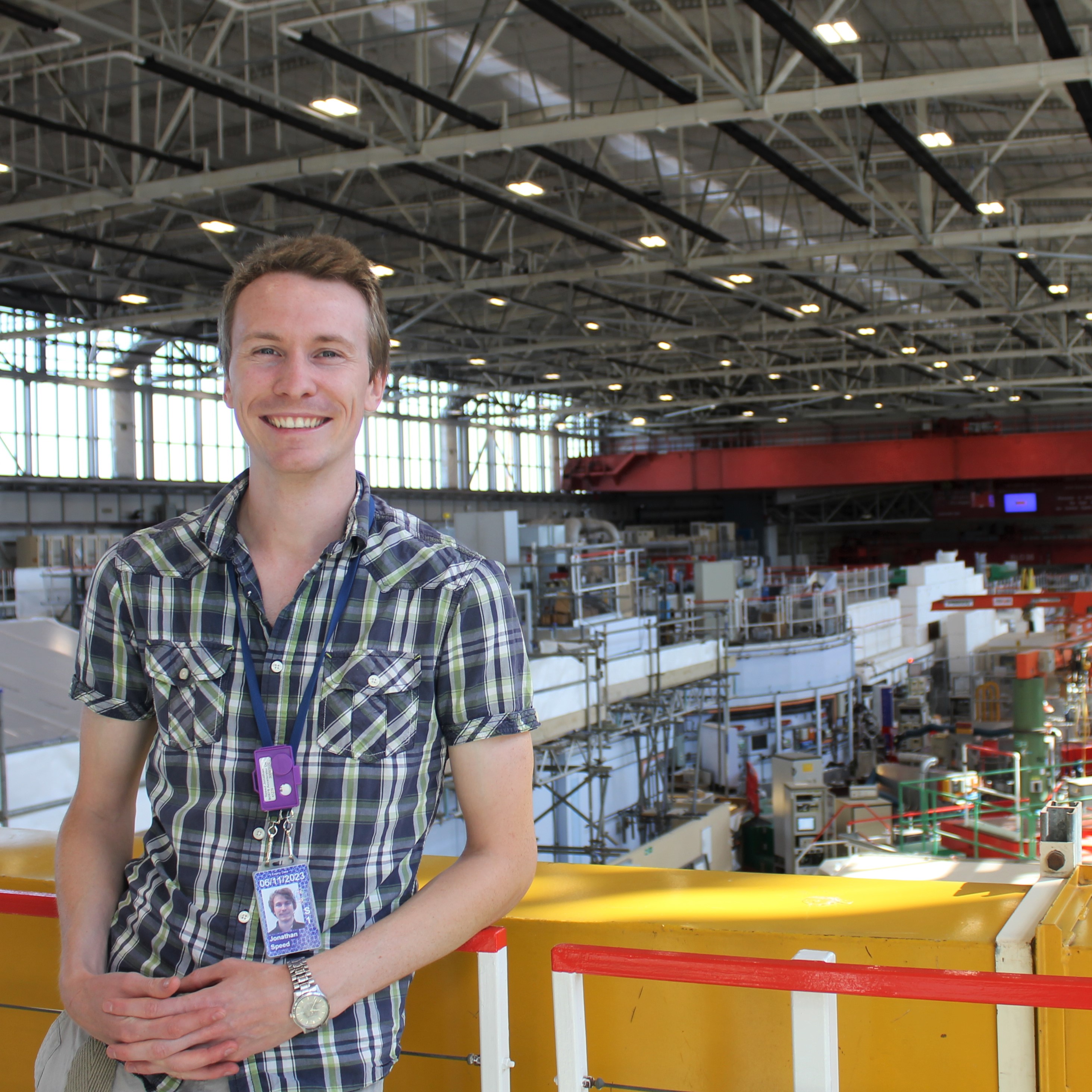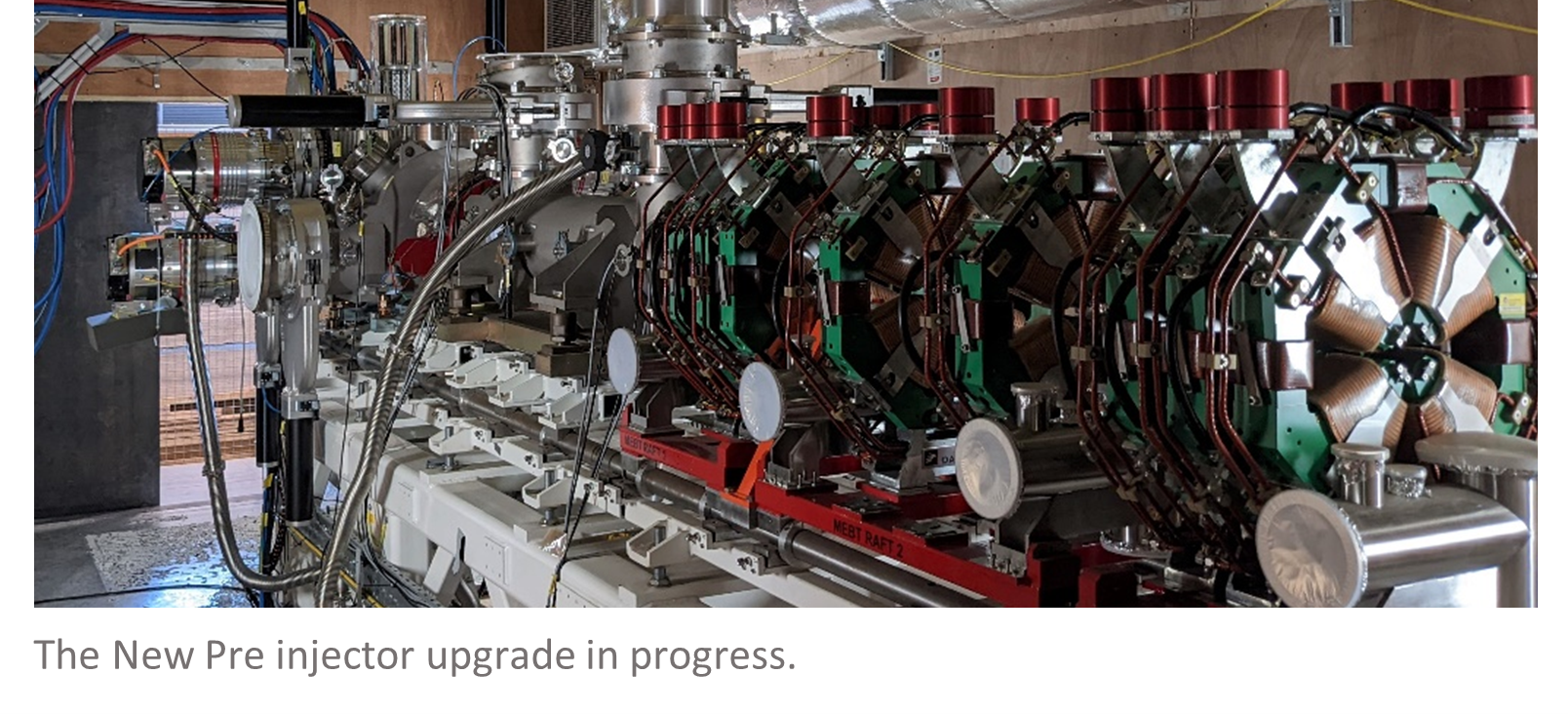 Jon enjoys the science of finding out how things work. As an engineer he has spent most of his career doing exactly that, and thenz taking it one step further to improve on what he finds.
Jon enjoys the science of finding out how things work. As an engineer he has spent most of his career doing exactly that, and thenz taking it one step further to improve on what he finds.
As a graduate of General Engineering at Durham University, specialising in mechanical engineering, Jon managed to find his first job at CERN. Living near Geneva (and enjoying the skiing), he spent most of his time designing normal conducting magnets for the Proton Synchrotron booster (the first synchrotron in the chain of accelerators) and was able to travel to Spain to see his new designs being manufactured. Much of his work at CERN was made operational in an upgrade in the last year and so is still being used today.
In November 2017, he came back to the UK to work at ISIS. “I came here looking a bit of variety, which is how we work here anyway. Since then, I have been involved in more magnet designs, but also ion source designs, RF cavity designs, choppers, the new collimator... There are all sorts of bits to work on from all over the accelerator, which keep things exciting."
As part of our accelerator design group, Jon can be working on any component part of the accelerator, from the linear accelerator and the synchrotron up to the target. His first project was to replace the synchrotron dipole coils, as the originals were from the 80s and had a habit of exploding! More recently, as the project manager on the replacement of the Muon Collimator, which was his favourite project to date. The old collimator, which sits just after the intermediate target, broke and needed to be replaced over the long shut down. Jon's team designed and replaced the collimator, overcoming the challenge of extremely high radiation levels. He describes this as “An interesting challenge. It felt like the original hadn't been designed with useful things to remove it safely at the end of its life. You could remove it easily enough, but not without going near it. We needed to do it from behind a shield, and so it was quite challenging. We designed various radiation flasks to put all the bits in at the end. It was quite a fun challenge."
Currently, Jon is involved in designing a possible accelerator for the exciting ISIS 2 project! One challenging possibility is to use a fixed field accelerator, which will have beams that move outwards radially using DC magnets. Additionally, the team are trialling a vertical fixed field accelerator in which the beam moves up instead of out. “But no one has ever built one before, so that was an interesting one to get my head round as its different to any magnet I've seen." This work gives an exciting view into what ISIS could look like in the future.
Another major project for the future that Jon is involved in is the pre-injector upgrade, which aims to replace the entire first section of the linear accelerator by 2026. They have started assembling it already and have 70% of the components for it. It has recently extracted its first beams out of the ion source!

“My favourite aspect of working here is that there is a lot of experimental work, and we have the freedom to be innovative" says Jon. “We do have time pressures, but there is also a pressure to do it right and come up with whatever the best solution is, as opposed to just anything that works. It allows you to have a bit of fun exploring different options."
He described an example innovative project, in which they had to cool a plasma chamber where there was very little space in which to put a cooling device. As with many things, no one else had made one on the scale that ISIS wanted and so it required different cooling mechanisms. Jon and the team decided to experiment with 3D printing the water cooler (something it is not generally used for) to specifically fit in the correct parameters… and it worked!
As well as experimenting with accelerator designs, Jon enjoys spending his free time experimenting with his garden. Planting all sorts of things to make it beautiful and seeing what lasts. When not in his own garden, he is enjoying the outdoors in other ways such as playing lots of football or walking into the countryside. “I just like to enjoy the world in which we live," he says.
Rapid Fire Questions
- What did you want to be when you grew up? A fireman
- Favourite Scientist? Jim Al-Khalili
- Favourite book? I'm currently reading a few good books. Let's go with 'The body – Bill Bryson'
- Can you describe yourself in 3 words? Relaxed, Sporty, Analytical
- Favourite place you have been? Yosemite valley
- If you had a time machine, where would you travel back to? I'd go back to a time when the dinosaurs were still around... so long as I could get back safely!
- Favourite food? A Sunday roast is definitely one of my favourites. But I have so many.
- If you could have a superpower, what would you choose? It would be awesome to fly
- If you could solve one problem, what would it be? I'd want to solve global inequality
- If you were an animal, what would you be? A leopard or a tiger
